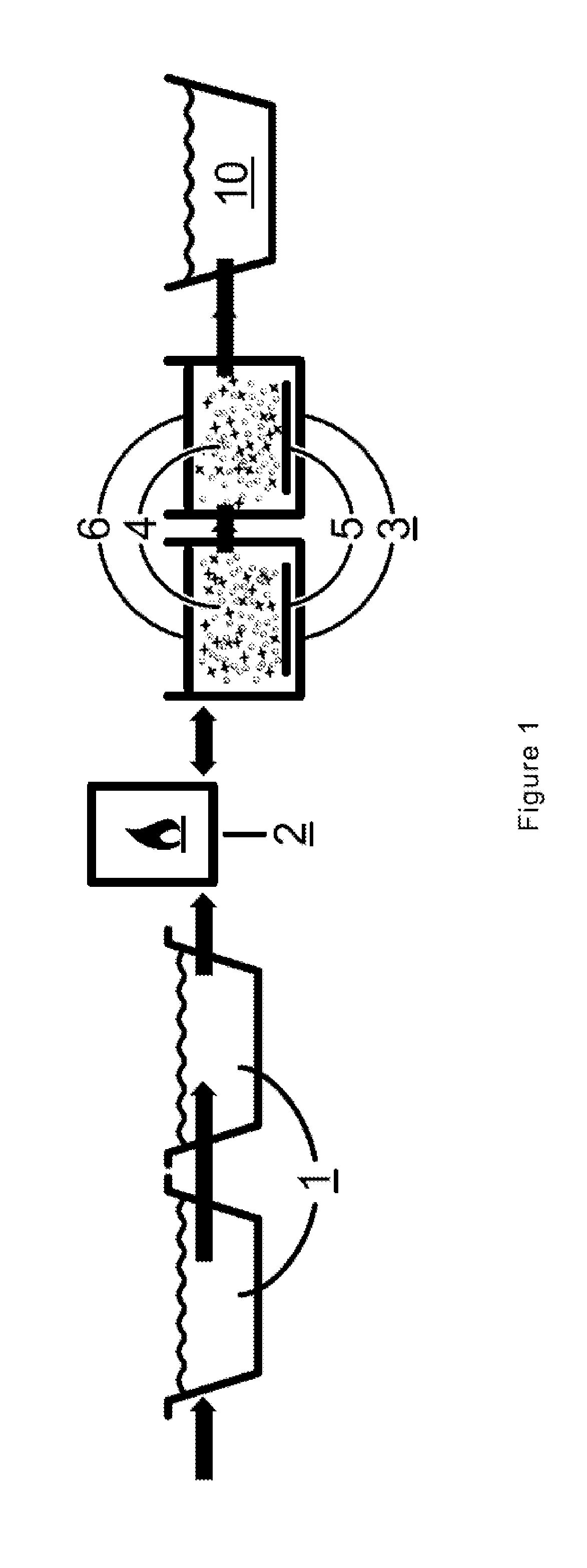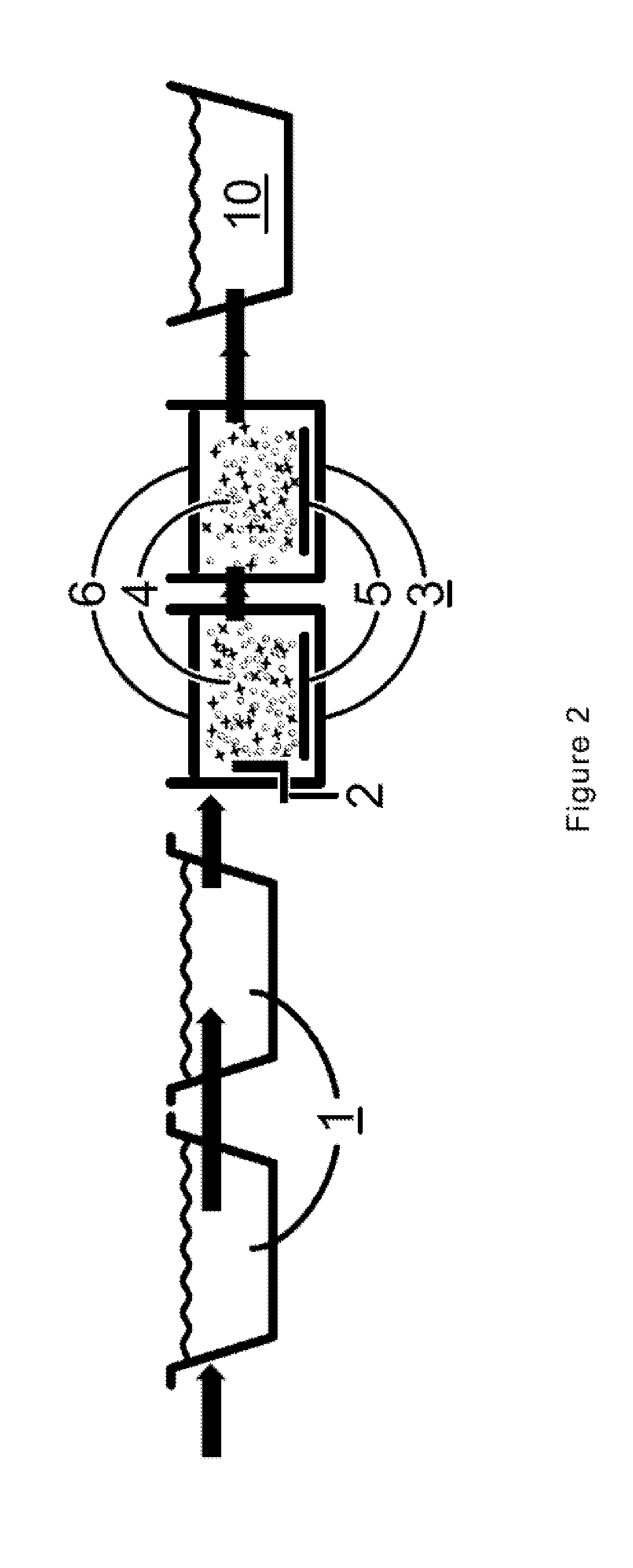Lagoon Biological Treatment Method & System
a biological treatment and lagoon technology, applied in biological water/sewage treatment, water treatment temperature conditions, water cleaning, etc., can solve the problems of increasing mechanical equipment, requiring millions of dollars for upfront capital costs, and owners of lagoon systems, so as to reduce capital costs, increase operating costs, and maintain footprint and operating costs. the effect of a minimum
- Summary
- Abstract
- Description
- Claims
- Application Information
AI Technical Summary
Benefits of technology
Problems solved by technology
Method used
Image
Examples
first embodiment
[0024]an LBT system according to the invention is illustrated in FIG. 1. As illustrated therein, with the LBT method, first wastewater is transferred into the wastewater lagoon facility where the initial objective is to reduce BOD and TSS to lower levels in order to promote ammonia removal through nitrification. This happens initially in the lagoon portion 1. Research in the field of activated sludge wastewater treatment demonstrated that the BOD must be sufficiently reduced to eliminate bacterial competition; generally a BOD level of 20-45 mg / L is ideal. The majority of lagoon systems, if operated according to this method, have the facilities in place to achieve BOD / TSS removal down to 20-45 mg / L at design flow and loadings. Therefore, the LBT process can utilize this pre-existing capability to avoid the need to upgrade this component if such an upgrade is not otherwise necessary (e.g., for equipment-related reasons).
[0025]There are two benefits to this approach. First, in this ini...
third embodiment
[0035]In still a third embodiment illustrated in FIG. 3, where the same reference numerals are used to depict the same elements as in FIG. 1, another method of ensuring the water temperature is at the minimum level entails blending a portion of warmer influent water with the potentially colder water that results from the lagoon processing stage. In this case, the warmer influent water functions as the source of heat 2. Common municipal influent wastewater is approximately 13.5 deg C. coming into a wastewater plant. Thus, by blending this warmer water with the colder primary effluent water leaving the lagoon portion 1 and entering the nitrification reactor 3 at, for example, a 3 to 1 ratio, the overall temperature of the water entering the reactor 3 can be increased to 5 deg C. for nitrification. The benefit of this approach is that it requires no further mechanical means for increasing the water temperature and thus avoids higher capital, operation, and maintenance costs.
[0036]While...
PUM
 Login to View More
Login to View More Abstract
Description
Claims
Application Information
 Login to View More
Login to View More - R&D
- Intellectual Property
- Life Sciences
- Materials
- Tech Scout
- Unparalleled Data Quality
- Higher Quality Content
- 60% Fewer Hallucinations
Browse by: Latest US Patents, China's latest patents, Technical Efficacy Thesaurus, Application Domain, Technology Topic, Popular Technical Reports.
© 2025 PatSnap. All rights reserved.Legal|Privacy policy|Modern Slavery Act Transparency Statement|Sitemap|About US| Contact US: help@patsnap.com



